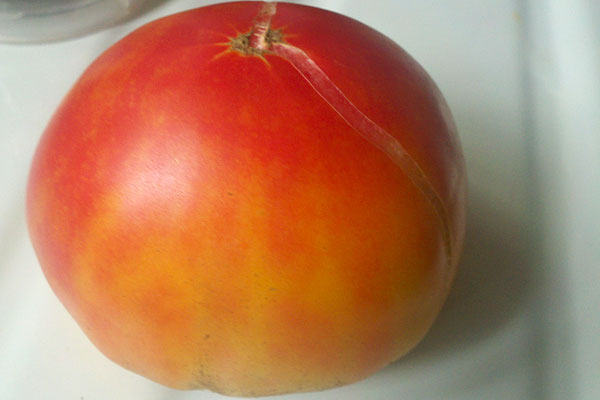-

Erin Donahue -

Christina Barkanic -

Brittany Trott -

Emily Wiley -

Jessica Reilley -

Chris Raines -

Will Nichols -

Emily Reddy -

Michele Marchetti -

Michele Frank -

James Gherardi -

Kit Henshaw -

Christina and Erin -

Kim Tait -

Erin McKinney -

Steve Spanelli -

Sam Komlenic -

Katherine Taylor Grofic -

James Eisenstein -

Jamie Oberdick -

Anna Lombardo -

LacCreta Holland -

Tony Ricci -

Local Food Journey -

Laura Young -

Kristin Camplese -

Harrison's Fresh + Local -

Danielle Matalonis -

Kristine A. -

Linda Weaver -

Naomi Elle Schwartz -

Dana Stuchul -

Cara McShane -

Brittany Smith -

Jessica Illuzzi - Frosty
-

Jessica Paholsky -

James Sechrengost -

Brad Yeckley -

Maya Althouse -

Jordan Reabold -

Kim Chase -

Maria Bryant - Alexandrea Scott
Saving Seeds from Tomatoes
Posted by Jamie Oberdick on 09/09, 2011 at 12:11 PM

The pineapple tomato has a beautiful yellow with red marbling color throughout, and a sweet delicious flavor. Photo Credit Jamie Oberdick.
Okay, you got some fantastic heirloom tomatoes, among the best you’ve ever had. You may have bought them at a farmers market or received them in a CSA box, or perhaps they were gifted to you by a friend. But you’re not sure of the variety so you can’t buy the seeds, right? No worries—saving tomato seeds is actually quite simple.
First, take one of those awesome tomatoes and cut it in half across its middle. Then either use your fingers or a spoon to remove both the seeds and the gooey stuff, and place them in a clean cup—a plastic cup is fine. Then add 2-3 tablespoons of water, and cover the cup with plastic. Make sure you slit the top of the plastic—air flow is vital here.
The reason you need air flow is because you want to encourage fermentation. Why are you fermenting the seeds? Because the process kills any disease that may be in the seeds.
Once you have done this, put the cup in a warm location like a sunny windowsill, out of the reach of curious kids or cats. Every day you want to stir this nasty little soup. You will notice a film forming on top, and that’s great. This is the fermentation process taking hold.
After 2-3 days, remove the film on top and pour the contents into a small strainer. Warning: the smell is, well….quite awful, so don’t inhale too much. Give them a good rinse, tapping the strainer to shake off access water.
Get a plate and put a coffee filter on it. Dump the seeds onto the coffee filter, spreading them out to get them as close to a single layer as you can. Then put them in a place where they can safely dry. Drying time can take a week, or more than a week in rainy weather. Once a day, stir the seeds around to ensure complete drying. They are dry when they no longer stick together when you touch them.
Next, find something to put them in, such as a small envelope. You can buy little envelopes at an office supply store that are perfect for this purpose.
That’s it! Now you have seeds for next year. One final tip: filling a little envelope with a handful of tomato seeds makes a nice holiday gift for your favorite gardener.
![]() Author: Jamie Oberdick
Author: Jamie Oberdick
Bio: Editor, Local Food Journey | Passionate about supporting local food in Central PA
- Our Local Food Journey comes to an end
- Winter isn’t a quiet time at the farm
- Get the taste of garden season right now by growing herbs indoors
- All you need to know about PASA’s Farming for the Future conference









Comments
Posted by .(JavaScript must be enabled to view this email address)
09/12 at 02:07 PM
Great post, Jamie! I had no idea…
Page 1 of 1 pages